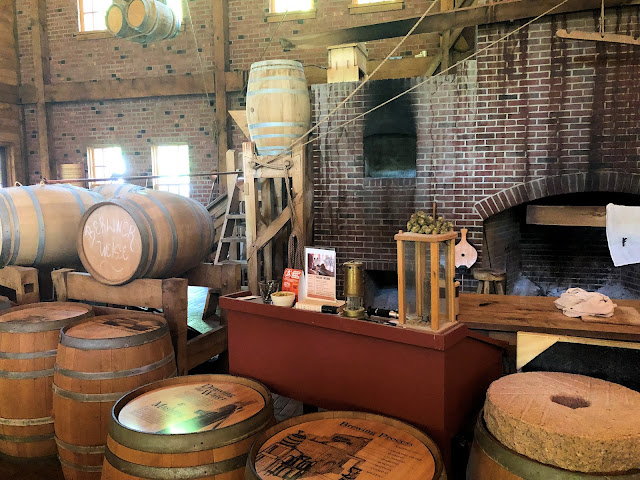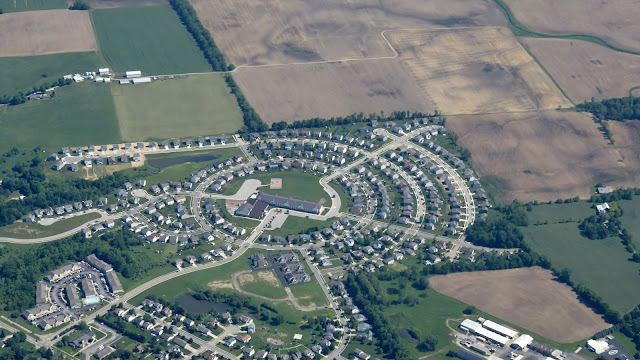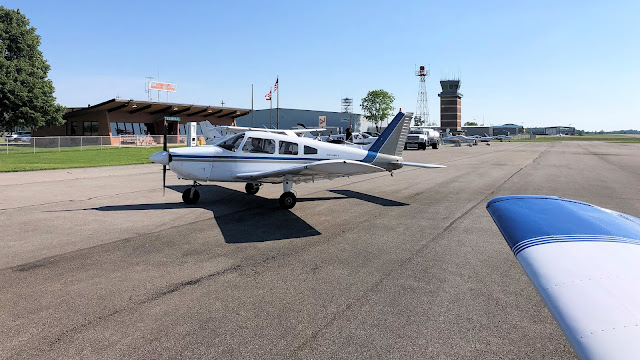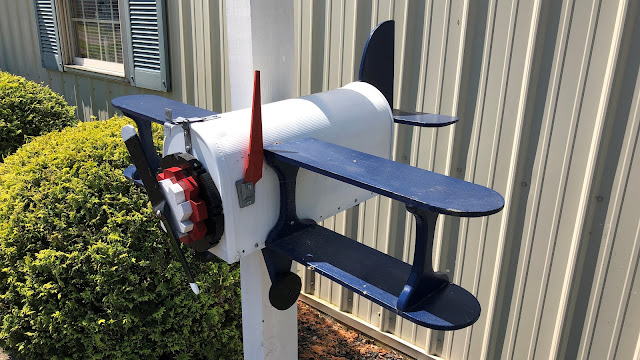Carillon Brewing
After seven hours, we managed to achieve a Cliff's Notes level survey of the National Museum of the USAF. With aching feet and a little intellectual burnout, we bought the obligatory gift shop swag and departed in search of food and drink.
 |
| Jason, Bogdan, Gilead, and Dan. |
We took a step back in time at the Carillon Brewing Company, part of Dayton's Carillon Historical Park.
 |
| Steve and me. Photo by Gilead. |
"Cubbin' King" Steve joined us for a second meal in a row.
 |
| Carillon Brewing |
As part of a historical park, the brewery was rustic and the staff were gussied up in their finest 1850s era duds. A staffer gave me the stink eye on seeing my Curtiss Museum t-shirt. "Glenn Curtiss? They let you into Dayton wearing that shirt?"
His colleague, the laid-back bearded fellow who took our orders snorted in response. "Why? Because Curtiss was the better businessman and wanted to build airplanes when the Wrights were just interested in defending their patents?" Mic drop. In Dayton, everyone evidently knows their pioneer era aviation history. (Except for Ohio's license plate designers who don't know a canard from a rudder.)
 |
| Carillon Brewing |
Back at the hotel that evening, I took advantage of the downtime to call my friend Greg. As we talked, I wandered the hotel room in bare feet, occasionally feeling the laminate faux-wood flooring shift with each step. After a while, I noticed that the soles of my feet felt a little odd. On inspection, I discovered that the bottoms of my feet had turned a strikingly dark shade of black. This was no ordinary dirt and the room was obviously not as clean as I first thought. My bedtime routine rarely includes scrubbing my feet, but in Ohio, I made an exception.
Ew.
Breakfast of Champions
| Date | Aircraft | Route of Flight | Time (hrs) | Total (hrs) |
| 30 May 2022 | N21481 | SGH (Springfield, OH) - PHD (New Philadelphia, OH) - SDC (Sodus, NY) | 3.4 | 2456.2 |
On the morning of departure, I enjoyed another sausage and egg bagel sandwich at the hotel. In the process, I discovered some surprising artifacts from my childhood available as dessert.
I have not beheld a Twinkie since childhood, let alone eaten one. While I was not interested in breaking my Hostess abstinence streak, I realized that these things would make for valuable currency in Zombieland. "Call Woody Harrelson," I remarked to Dan.
I also noted that the legendary snack cakes are, in fact, emblazoned with an expiration date. So much for that urban legend.
Back at Springfield-Beckley Municipal, we preflighted the airplanes and took on fuel.
It was a beautiful VFR day and expected to stay that way all the way home. No instrument ratings would be necessary for cross country flight that day.
 |
| Ready to go: me, Bogdan, Jason, Dan, and Gilead |
 |
| Moments before engine start to depart Springfield. |
 |
| Hoover Reservoir north of Columbus. |
 |
| An eye-catching development in northern Columbus. |
While the flight home was generally easy for us, others seemed to be struggling. At one point, the Columbus Approach controller lost his temper at a pilot who responded to multiple broadcasts directed at other airplanes. "No, Cessna XYZ, that call was not for you!" (Why is it always a Cessna?)
Earning My PHD
 |
| Eight Five X-Ray and Warrior 481 on the ramp in New Philadelphia. Photo by Dan. |
We stopped for lunch at Harry Clever Field (KPHD) in New Philadelphia, Ohio. The airport name was subject to discussion among our pilot group because I wanted to pronounce it "clever" and others wanted to pronounce it as "cleaver". I questioned my position slightly because, really, what are the odds that an airport named "clever" would have PHD as an identifier? That seemed too coincidental to be true.
Fortunately for us, UNICOM radio chatter explicitly clarified the pronunciation to be “New Philly".
New Philly became my 240th airport. It only took 20 years and 240 airports to finally earn my aeronautical PHD. Steve flew his family there later in the day, the first flight for his youngest son and Steve's first visit to New Philly. I suspect that New Philly is the only airport that Steve and I have both visited for the first time on the same day.
Fun fact: Astronaut John Glenn soloed at New Philly. It was not in a Mercury capsule.
I wondered if this mailbox was specifically meant for air mail. Regardless, I hope that it was not designed by the local EAA chapter because I think that flag represents a seriously fundamental flaw.
 |
| Miller's Creamery photographed from the airport ramp. |
The sit-down restaurant on the field, Maggoo's Pizza and Pasta, was closed for Memorial Day. However, Miller's Creamery was open just on the other side of the airport fence. My milkshake was an excellent finish to a mediocre meal.
Smooth Sailing
Flying home, we surfed across the cloud tops from New Philly all the way to Sodus. Cleveland Approach was remarkably busy and, though I was able to get flight following almost immediately, it took Dan multiple tries and at least 20 minutes to get the approach controller's attention.
Cleveland Approach was working a police helicopter in pursuit of a suspect fleeing on a motorcycle. “Did you catch him?” Approach queried. The helicopter pilot explained that the chase ended with the rider hitting something and being thrown from his bike.
“Sheesh. Amateur,” opined Approach. Our in-flight entertainment was sadly limited to the misfortune of one (alleged) felon.
En route, Dan flew Eight Five X-Ray only a couple of miles off our port wingtip at the same altitude and, much to our frustration, neither Bogdan nor I could get a visual on them.
In the end, we had a fantastic trip. Gilead and I made great use of our instrument ratings. We added three new airports and 7.5 hours of flight time to our logbooks. We enjoyed two excellent Dayton brew pubs and catching up with Steve in person was a lot of fun. Most of all, after twenty years, I am finally able to confirm that the rumors are true. The National Museum of the United States Air Force really does require more than a single day to see everything.
But those things that we did see...wow.




















































